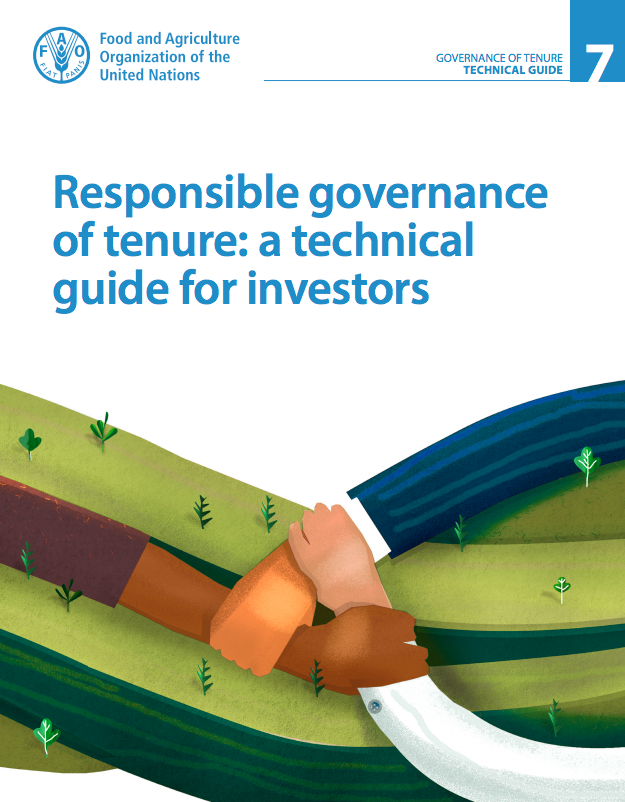Deforestation-driven food-web collapse linked to emerging tropical infectious disease, Mycobacterium ulcerans
Generalist microorganisms are the agents of many emerging infectious diseases (EIDs), but their natural life cycles are difficult to predict due to the multiplicity of potential hosts and environmental reservoirs. Among 250 known human EIDs, many have been traced to tropical rain forests and specifically freshwater aquatic systems, which act as an interface between microbe-rich sediments or substrates and terrestrial habitats.
Европейская комиссия по сельскому хозяйству Тридцать девятая сессия ДОКЛАД
Meeting Name: European Commission on Agriculture
Meeting symbol/code: ECA/39/15/Report
Session: Sess. 39
Report of the Thirty-ninth Session of the European Commission on Agriculture (ECA)
Meeting Name: European Commission on Agriculture
Meeting symbol/code: ECA/39/15/Report
Session: Sess. 39
Land Degradation Assessment in Drylands. Manual for Local Level Assessment of Land Degradation and Sustainable Land Management. Part 1
This local level land resources assessment methodology (LADA-Local) was produced within the Land Degradation Assessment in Drylands (LADA) project. See Box 1 for the LADA project objectives and outcomes and the website http://www.fao.org/nr/lada">www.fao.org/nr/lada for further information.
Georgia Case Study: Prepared for FAO as part of the <i> State of the World’s Forests 2016 </i> (SOFO)
The State of the World’s Forests (SOFO) 2016 “Forests and Agriculture – Land Use Challenges and Opportunities” examines the competing demands for land for forests and agriculture; and the relationship between forest cover changes and food security. In particular, forests and food security highlight the possibility to meet food security objectives while maintaining or increasing existing forests.
Nouvelles approches des niveaux d’émissions de référence pour les forêts et/ou niveaux de référence pour les forêts dans le contexte de la REDD+
Les informations contenues dans ce document correspondent à la situation en octobre 2014. Pour une vue d’ensemble des plus récentes soumissions de NERF/NRF à la CCNUCC, veuillez consulter http://redd.unfccc.int/fact-sheets/forest-reference-emission-levels.html">ce lien.
Forest and Landscape Restoration
Meeting Name: African Forestry and Wildlife Commission
Meeting symbol/code: FO:AFWC/2016/12
Session: Sess. 20
Forest and Landscape Restoration
Meeting Name: Asia-Pacific Forestry Commission (APFC)
Meeting symbol/code: FO:APFC/2016/3
Session: Sess. 26
Informe de la 39.ª reunión de la Comisión Europea de Agricultura
Meeting Name: FAO Regional Conference for Europe (ERC)
Meeting symbol/code: ERC/16/8
Session: Sess. 30
Tunisia Case Study: Prepared for FAO as part of the <i>State of the World’s Forests 2016 </i>(SOFO)
Forests and woody vegetation cover a total surface area of 1.3 million ha in 2015 (FAO 2015) that represents 8% of the country surface area. It includes 1 million ha of forests and 0.3 Million ha of shrubs and other woody area. The forest area has increased from 643,000 ha in 1990 to 1,041,000 ha in 2015 ((FAO 2015) that corresponds to an increase by 62% in the last twenty five years or an annual increase of 1.9%.
Enfoques emergentes en la construcción de niveles de referencia de las emisiones forestales y/o niveles de referencia forestales para REDD+
La información contenida en este documento corresponde a la situación para octubre de 2014. Para una visión de conjunto reciente de las propuestas deNREF/NRF al CMNUCC, por favor consulte http://redd.unfccc.int/fact-sheets/forest-reference-emission-levels.html">enlace


